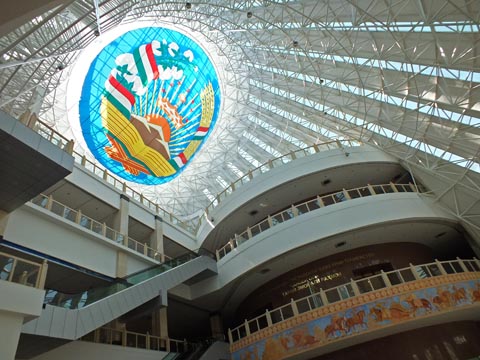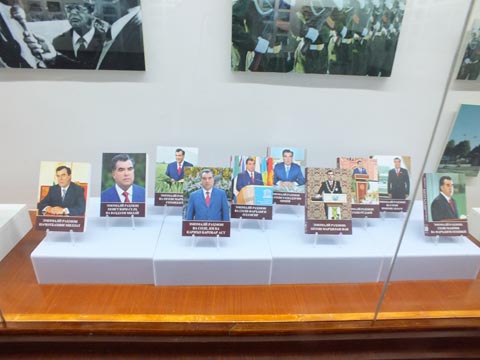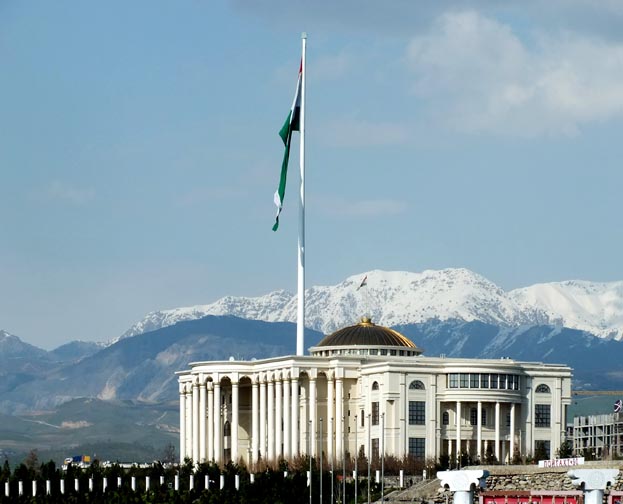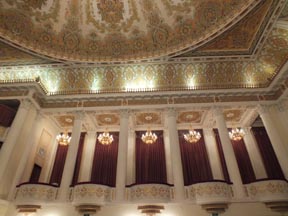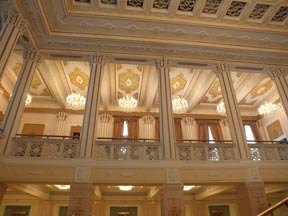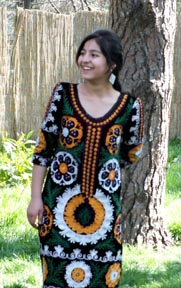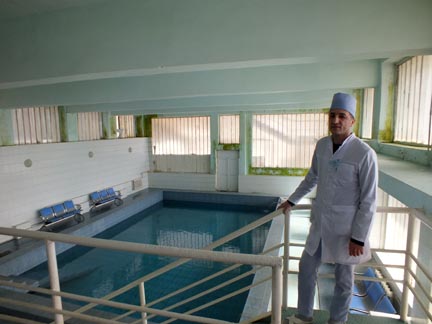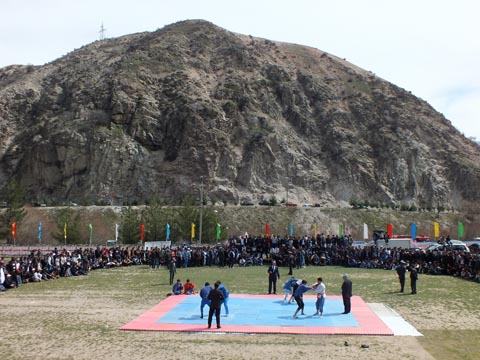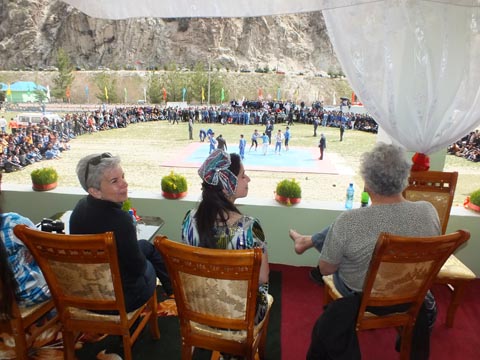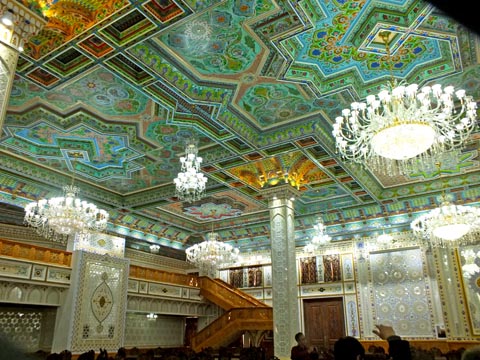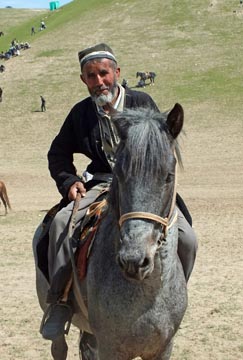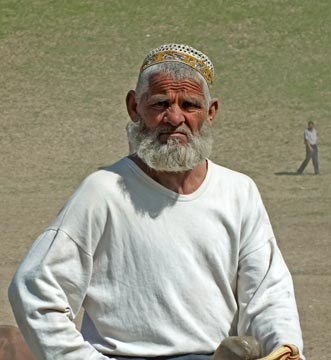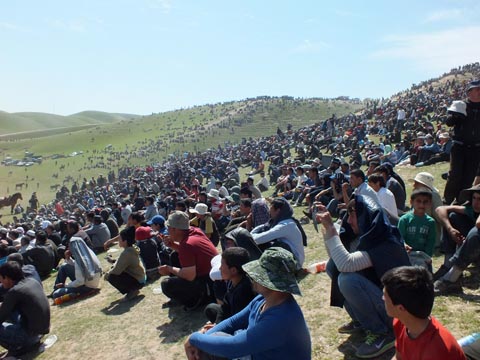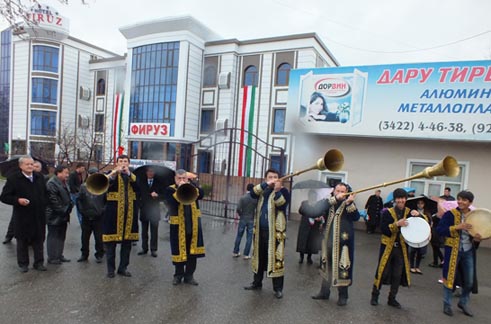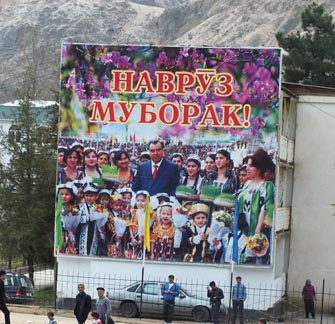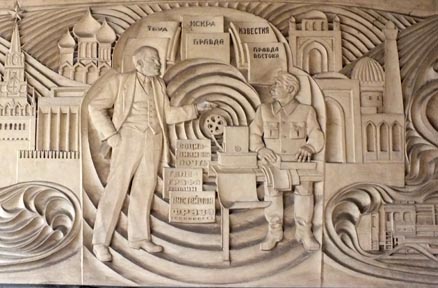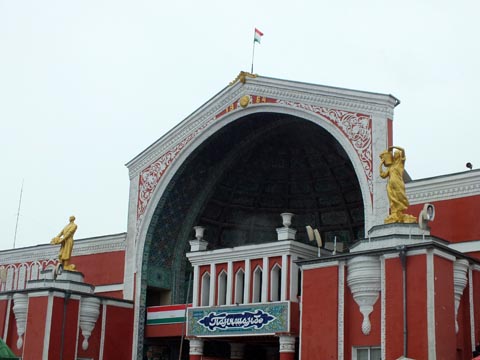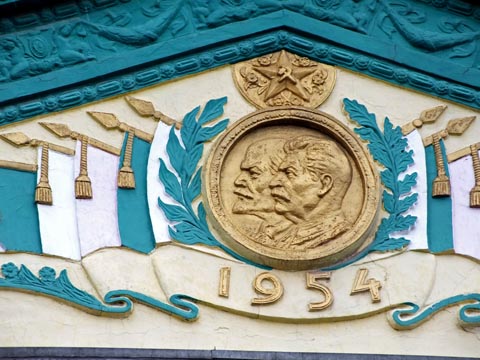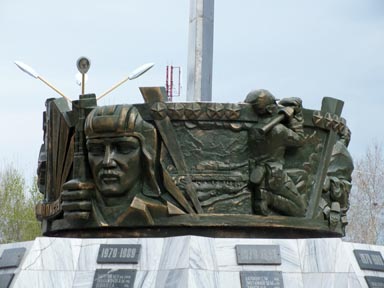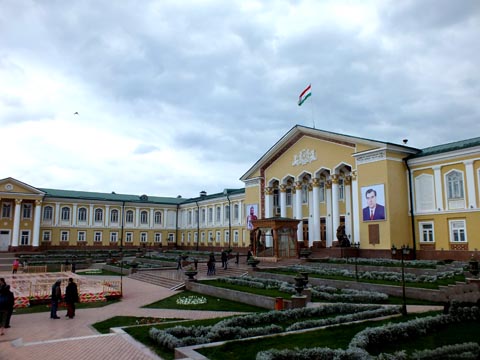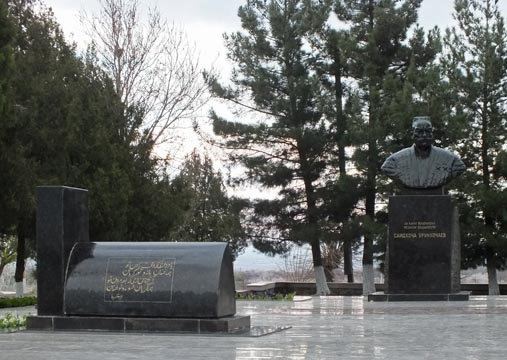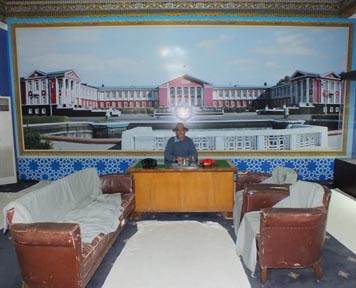There are two countries left in Asia (excluding Arabia) that I have yet to visit. With this trip, it’s a wrap. Have I saved the best for last? You be the judge.
Part II – The Last 'Stan
The dissolution of the Soviet Union resulted in the five central Asian republics as independent countries. I have already visited Uzbekistan, Kazakhstan, Turkmenistan, and Kyrgyzstan (plus Pakistan, Afghanistan, Turkestan (region) and Turkistan (city). There is only one ‘stan left.
If you want to fly to Tajikistan, there is not a lot of choice. I am in the Dubai budget airline terminal because Fly Dubai serves both Dhaka and Dushanbe. I fly westward for five hours to Dubai, then change planes to fly eastward three and a half hours to central Asia.
In the terminal, I meet up with Agustine, my friend from Mexico. Tajikistan is one of those places where it’s best to be on a tour, and we have signed up for a week-long outing.
After we land around midnight, entry formalities are painless: our letter of invitation results in the swift issuance of a visa on arrival. We are met and taken to our hotel. In contrast to the glass and steel Hyatt and Sheraton on the main boulevard that are obvious targets for truck bombs and terrorist attacks, ours is a brand new hotel designed with these troubled times in mind: two-story, unobtrusive, unmarked, on a quiet street in a residential area, surrounded by a wall with cameras, a guardhouse, and sally-port gates. No complaints at all about my room: it’s large enough to hold a cotillion.

Some flights do not arrive until morning, so meet-up is not until the afternoon: we are the usual crowd of adventure travelers: about nineteen from a dozen or so countries, all well-traveled and not your typical group tourist. One guy was on the Turkmenistan tour with me a couple years back.
The half-day program is a trip to the outskirts of city. On the way, the guide give us a bit of background: Dushanbe means “Monday market” in Persian. Several centuries ago Silk Road traders were given permission to establish a weekly market to avoid carrying back unsold goods from the major cities. In the 1920’s the Soviets planned and built the city on the site of a razed village. It was named “Stalinabad” until 1961, and now has over a million residents.
Hissar Fortress is a partially-restored 16th century complex, including a madrassa, built by a subaltern of the Emir of Bukhara, who held sway over the region. Across the road is a madrassa of similar vintage.
|
|
|
On the way back we spot a bit of Soviet detritus: a Lenin statue sans right arm in a schoolyard. No deliberate vandalism; years of neglect resulted in a small crack in which cycles of freezing and thawing led to the arm finally falling off about two years back.
|
|
|
The next day is the city tour. We start at Victory Park, on a hill overlooking the city and commemorating the triumph over fascism in The Great Patriotic War (WWII). After half the population of the Soviet Union came under German occupation, central Asia became the source for cannon fodder for the 15 million-strong Red Army. I learn that 54 Tajiks achieved the status of Hero of the Soviet Union and 19 soldiers were recipients of the 3rd Degree of the Order of Glory. Unfortunately, the Eternal Flame of Remembrance is not so eternal since neighboring Uzbekistan cut off the gas supply.
|
|
|
On the main boulevard (f/k/a Lenin St), the giant statute of Lenin has been consigned to the ash heap of history and replaced by a 40ft statue of Somoni, a 10th century ruler and national hero (also for whom the currency is named). The crown atop the arch is covered in 22 pounds of Tajik gold..
|
|
|
Near the National Museum is what is billed as the world’s tallest flagpole. At 541 ft., it is up there but not the tops (mebbe #2).
The Museum is housed in a showcase new building. Inside is mostly empty space. There are prehistoric and historic displays, including a compendium of literary effluvia by and photographs of El Presidente. The gift gallery contains the usual assortment of kitsch offloaded by foreign dignitaries and admirers, including a pencil case from the US Central Command presented by General Tommy Franks.
|
|
|
|
|
|
|
A poor country needs a grand Presidential Palace, and Dushanbe does not disappoint. Here, it has the modest moniker "The Palace of Nations." Of course, you can’t even approach to take a picture. Other monuments are to scale. The snow-capped peaks in all directions provide a scenic backdrop.
|
|
|
All the former Soviet ‘stans have been under one-man rule in the 25 years since independence. Here the cult of personality has not reached the ridiculous levels of Turkmenistan, but giant portraits of The Big Man are everywhere: in front of Hissar Fortress, visiting the fort; in front of the Agriculture Ministry, walking through waving fields of grain; in front of the Opera House, greeting the performers. In front of the Finance Ministry I look in vain for an image of him emptying the pockets of the taxpayers.
Seen exiting the US Embassy: a big, black SUV with diplomatic plates. Tinted windows prevent seeing who is in back, but the driver looks like he should be working for Bin Laden.
We also get a tour of the Opera House Theater, a Stalin-era showpiece recently refurbished.
|
|
|
|
|
It is Navruz, the Persian New Year, and the city is dressed in a festive mood. So are the girls: central Asian beauties in their colorful outfits and cute caps.
|
|
|
|
|
Next on the agenda, some time-travel: the next day we leave Dushanbe for an overnight excursion to the spa at Obi Garm. The main attraction is the radon-infused waters emitting from natural hot springs. The spa was established in 1935, when radioactivity was considered healthful, and subsequently expanded to a full-scale sanatorium. The main building is a Brezhnev-era concrete monstrosity in a lovely setting.
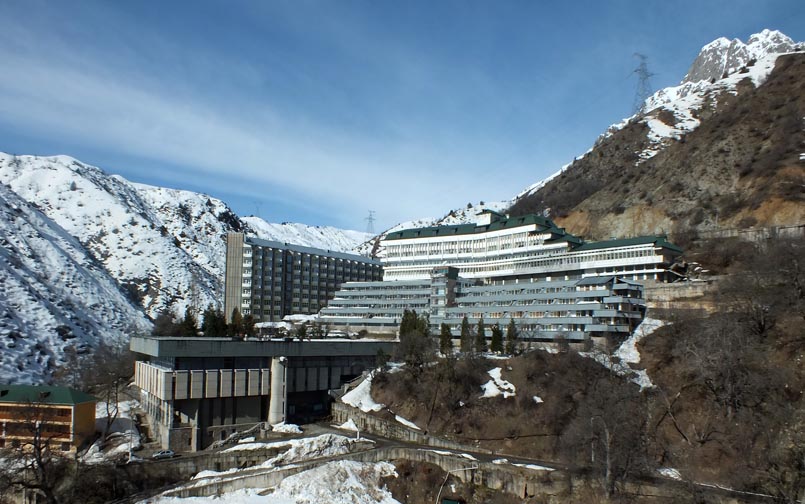
The operation has been privatized, sort of, and now sells itself as a “balneoclimatic health resort.” The hydrotherapy includes getting blasted by high-pressure jets of radon-infused water, taking a radon-infused steam bath, and dips in the radon-infused pool. The attendants wear lab coats and smocks, and the dining hall waitresses sport little nurses caps.
|
|
|
The hotel portion of the facility has been modernized – there is even wifi in the rooms (too bad it doesn’t work). It’s cold outside – here in the mountains there is still snow on the ground – so the heat is going full blast; and it’s so overheated the windows have to stay open. The refurbished elevator is all chrome and accent lights – it looks like it belongs in a disco – and is huge; yet, as soon as a fourth person steps aboard, the beep beep beep of the overload alarm sounds.
Some in our group avail themselves of these treatments, but I prefer the non-radon infused waters of the pool and showers of Stately Bergwerk Manor. I also eschew the administration of leeches pictured in the brochure. Agustine opts for a massage, expecting an eye-candy masseuse but instead is quite literally manhandled by a retired wrestler.
Aglow with health (or perhaps radiation) we head back to Dushanbe. On the way we stop at a town where a Navruz festival is under way. The main action is a wrestling competition in an arena. (Future masseurs?) As esteemed foreign guests, we are invited to sit in the VIP section of the grandstand.
|
|
|
|
|
|
|
|
On the outskirts of the city we pass an enormous abandoned concrete factory. Two problems: it is surrounded by a high wall that bars access; and there is no place from which one can get a good photo. Still, just driving past is pretty impressive.
In the city we get a special tour of the congress hall, easily the most ornate and beautifully decorated building in the country (and closed to the public). Grand conference rooms and banquest halls. A bit over the top, but eye-popping. It even has a recreation center offering billiards (under a large painting of Bogart, James Dean, and Elvis playing pool together), bowling, and booze. (Like most of post-Soviet central Asia, Tajikistan is nominally but not seriously Muslim.)
|
|
|
|
|
|
|
|
The reason we have come in March is because Navruz time is also buzkashi time. Buzkashi is more often associated with Afghanistan, right next door. It’s similar to polo, only the “ball” is a dead goat. Players compete individually, although informal alliances may form. At the end, there is only one winner.
When and where has been unclear from the outset: We want to see the best match, but nothing gets decided until the last minute as various patrons offer more lucrative prizes and players consider the competing venues. Our guides do not know the plan until the night before.
The event takes place in a valley a couple hours drive away. The tournament takes place in a valley while spectators fill the surrounding hills. It’s all very free form: the playing field is not marked and the goal is denoted only by two mounds of dirt. There are no barriers between the participants and the fans, and no safety equipment, although some of the horsemen wear padded cloth Russian tankers’ helmets.
|
|
|
|
There is no way to follow the action: fifty or more horsemen surge back and forth in the valley below. They are trying to drag the carcass across the goal line, but the distance, dust, and confusion make it impossible to discern anything specific. Instead, it more of a spectacular backdrop to an huge outdoor festival: a central Asian Woodstock (but without the music, drugs, nudity, hippies, or the peace and love theme).
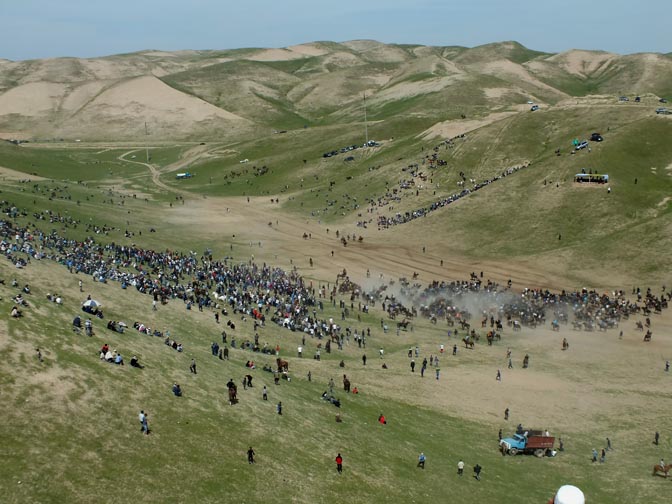
|
|
|
Later on, on TV, we find out that the winner received a Mercedes from the President’s son.
Time to move on. Khujand is the second city of Tajikistan and, in contrast to Dushanbe, one of the oldest in central Asia. It was founded as Cyropolis by Cyrus the Great of Persia, then became Alexandria Eschate (“Alexandria the furthest”) in Hellenistic times. During the Sovet era it was called Leninabad. It’s an all-day trip across mountains and through tunnels. We drive past the Lenin Dam, where the stern gaze of a giant head of Vladimir Ilyich holds back the waters. Tajikistan is largely mountainous, with the two highest peaks being Mt. Lenin and Mt. Somoni (f/k/a Mt. Stalin).
Our hotel is on the main road. At breakfast I notice an absence of traffic and crowd gathering on the sidewalk. Guys with giant brass horns are dressed in traditional costume. A fanfare begins and then the Presidential motorcade passes. He was in Khujand presiding over the national Navruz celebrations.
|
|
|
One day is sufficient to take in the sights. The ancient city walls are in ruins, but citadel has been rebuilt and houses the history museum.

The capital cities of the former Soviet empire tend to get remade, but the secondary ones preserve the architecture and design of the former era. Khujand is a a good exemplar: inside the post office are huge murals done in socialist realism style. On the pediment above the central market a rare Stalin portrait survives.
|
|
|
|
|
|
|
The former Leninabad is home to the largest statue of Lenin in Central Asia. He has been removed from its place of prominence (replaced by a statue of Somoni) and relegated to an obscure park on the far side of the river next to the Afghan War memorial (definitely not “victory park”).
|
|
|
|
Perhaps the oddest sight of all is the Arbob Cultural Palace, the legacy of a larger-than-life (literally: he was a 390 lb giant) commissar who became satrap of the area’s collective farms. His headquarters is modeled after the Peterhof, Peter The Great’s summer palace outside St. Petersburg, and houses a theatre, banquet rooms, and his offices.
|
|
|
In one wing is a museum on the history and achievements of the Soviet collectivization of agriculture. Apparently, he got along well with Stalin and outlived him, never falling out of favor. His tomb is on the grounds.
|
|
|
The facade served as a backdrop to the nationally-televised Navruz celebration. Fountains, landscaping and subsidiary building add to make this a showcase of Soviet splendor.
|
|
|
|
That marks the end of our week-long tour. The schedule was designed to coincide with the weekly flight to Urumqi in western China, but not with anything else. If I return via Dubai, non-meshing flight schedules mean that it would take four days. There are daily flights to Moscow, but I would have to change airports there and do not have a transit visa. I’ve figured it out (or so I think): there is an early morning flight to St. Petersburg connecting to Moscow (right airport) from which I can fly to New York and be back in Jacksonville that same night. Both St. Petersburg and Moscow offer visa-free transfers. (Agustine is moving on to Kazakhstan so returns to Dushanbe for a flight to Almaty).
I leave for the airport at 2:00 AM for my 4:00 flight. The document inspection area is a madhouse, but my guide walks me right by and through the impatient crowd and exasperated officials. At the check-in desk, there is a problem: they want to see a visa for Russia. We smooth-talk our way past that problem and I am given a boarding pass. Wary of being separated from my luggage, I am allowed to bring my big bag as carry-on.
The flight is 100% full: all men traveling to be construction laborers as the building season commences in Russia. There are very few jobs to be had in Tajikistan, and the country’s economy depends on remittances from expat workers. Even though Tajiks are on the bottom rung and get the worst treatment and the lowest pay, every Spring there is an exodus north.
Exiting the plane, I follow the signs to the transit desk to get my boarding passes for the next two flights. I am the only customer and expect to be promptly on my way. But there is a problem: they won’t allow me on the flight to Moscow without a visa. I had already made sure that I would not have to change terminals in either city, but no matter; for a visa-free transfer I need to be on a non-stop international flight, and the connection to Moscow is a domestic flight. My choice is either to find another flight leaving Russia from here or go back to Khujand. Definitely not the latter!
Good thing there is free wifi: I whip out my iPad and study the options. There are no flights to the US from St. Petersburg, but there is a flight to Paris leaving within the hour. The counter girls are very nice and let me use their phone to call Aeroflot: they can change my ticket but I need to pay $40. No, I can’t give them my credit card over the phone. No, they don’t accept payment at the transfer desk. I need to pay online. Easy enough, I think. I think wrong: fraud-blocking software prevents US-issued credit cards from on-line purchases originating in Russia. Sensible enough, but a problem for me right here and now. I try several cards several times. (Never rely on just one card!) Finally, one charge attempt goes through and I get a confirmation number. I show that number to the gal who enters it on her keyboard and the printer spits out a boarding pass. It is now less then twenty minutes to departure.
She escorts me through the door behind her into the departure hall and to my gate. The other pax have already boarded. The gate agent gives me a baggage tag and tells me to take my large bag to the plane and hand it to the guy at the cargo hold door. I ascend the stairs, board, and the door closes behind me. So much for this check-in-three-hours-prior-to-departure stuff: if they want to expedite, they can!
We arrive in Paris around noon. Out comes the iPad to figure how to best cross the Atlantic. Even though it’s only noon, it looks like there are no more flights that day still open for ticketing. Next day, OK. It’s way cheaper to buy a round-trip ticket than a one-way, so I buy a ticket to Jacksonville via Philly with a return in two weeks. Next comes a hotel for the night: I get the very comfortable Millennium Airport (w/ free shuttle) on a last-minute booking for $70.
I even have time to pop into the city, I think, until I walk outside. It is bitterly cold, and I don’t have any warm clothing. Plus, due to the early flight and time change I am dead tired and ready to hit the sack, so I must report that on my most recent trip to Paris I didn’t even leave the hotel.
Everything goes according the (revised) plan and I arrive in Jacksonville a day late. That is why they call it adventure travel.
Epilogue: two weeks later I get an email from Expedia advising me that the flight times for my flight to Paris have changed: the new itinerary delays the departure and arrival by one day. I call and tell them that the new schdule is completely unacceptable and I would like a refund. Sho' nuff, a couple days later my card statement shows a credit of one-half the cost of the round-trip ticket I had purchased.









